Balm of Gilead is the folk term for the buds of balsam poplar (Eastern) and Black Cottonwood (Western) trees in North America. In Africa and the Middle East another tree called Balm of Gilead also has aromatic resin. This is the one mentioned in the Bible This article is focused on the North American species.
To get Balm of Gilead, the resinous buds of these poplar family trees are harvested in early spring before bud break. The sticky buds are aromatic and filled with a red resin. On warm days the perfume will fill the air. The tell tale aroma is a harbinger of warmer days.
The trees break bud when warmer days are followed by nights that are just above freezing, when the sap flows freely. You’ll want to time your harvest before the last frost in your area and before the days become too warm. Once the trees leaf out your window of opportunity is gone.
If you missed the season for harvest in your vicinity, going higher into the mountains can bring you balsam buds that are ready to harvest. As the snow recedes in the mountains the buds swell and get ready to break. Follow that line of snow melt and you should find harvest-able buds until May or even early June.
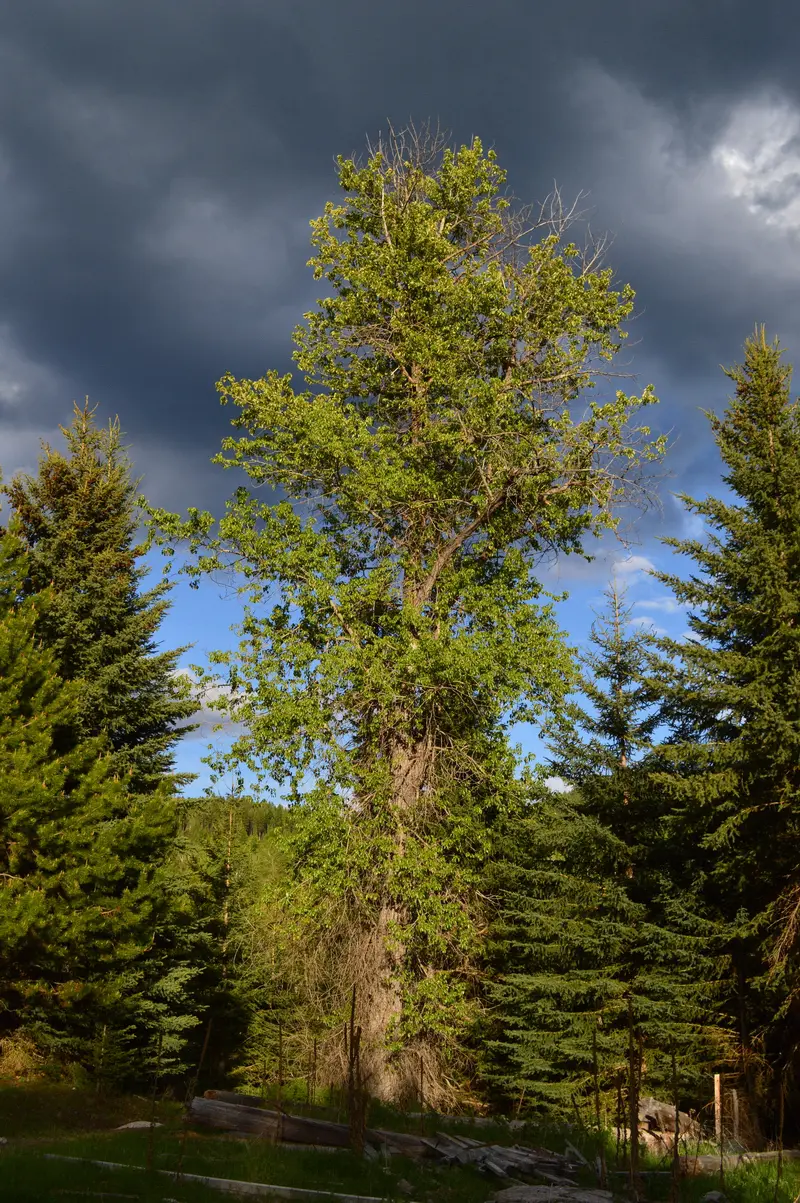
Black Cottonwood in late spring
Balm of Gilead benefits
The resin of balm of Gilead is soluble in oil and in alcohol. It can be used as a tincture, though it has a bitter flavor. It is predominantly used in salve making and as a massage oil. The resin contains salicin and was traditionally used as an analgesic anti-inflammatory herb. Those who are allergic to aspirin should speak to their doctor before self-medicating with balm of Gilead.
- Analgesic
- Anti-inflammatory
- Anti-oxidant
- Antibacterial
- Astringent
- Helps with wound healing
- Soothes cough
- Soothes burns and sunburn
- Relieves headache
- Antitumor and Anticancer
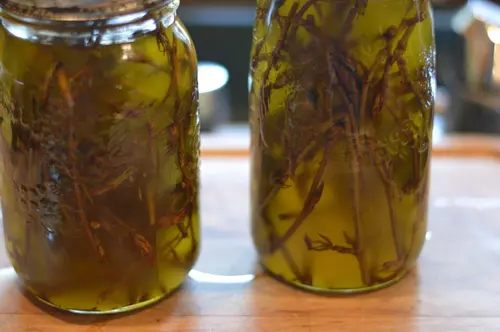
It was a season with very few buds, after a very dry summer the year before, so rather than harvest the few buds that were there, I clipped the ends of downed branches, including the buds and infused my oil with the branch ends. (2017 picture)
Make positive identification of the tree
To determine if the cottonwood or poplar trees growing near you are the right kind, touch and smell the young leaf-buds, before leaf break. The smell is a strong pleasant perfume, with a hint of camphor. The buds will be sticky and resinous, coating your fingers with a reddish brown gum. The young branch tips will be deeply colored with the rising sap.
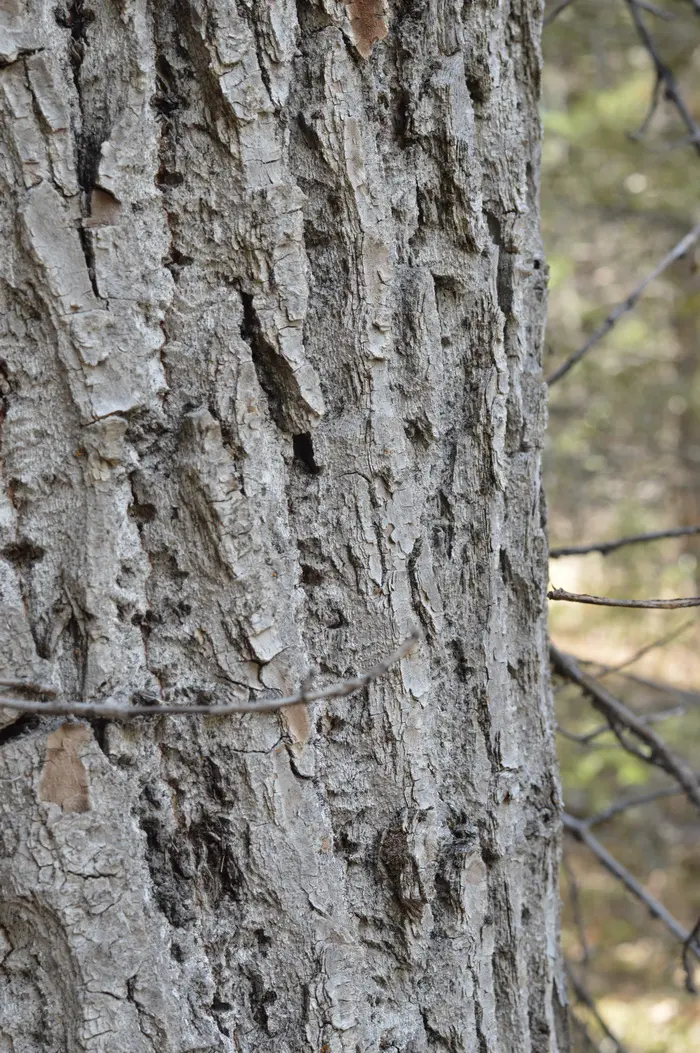
Mature black cottonwood bark
These pictures are of the Black Cottonwood, native to Western North America. The bark of the trunk of a mature Black Cottonwood tree is grey, and deeply fissured.
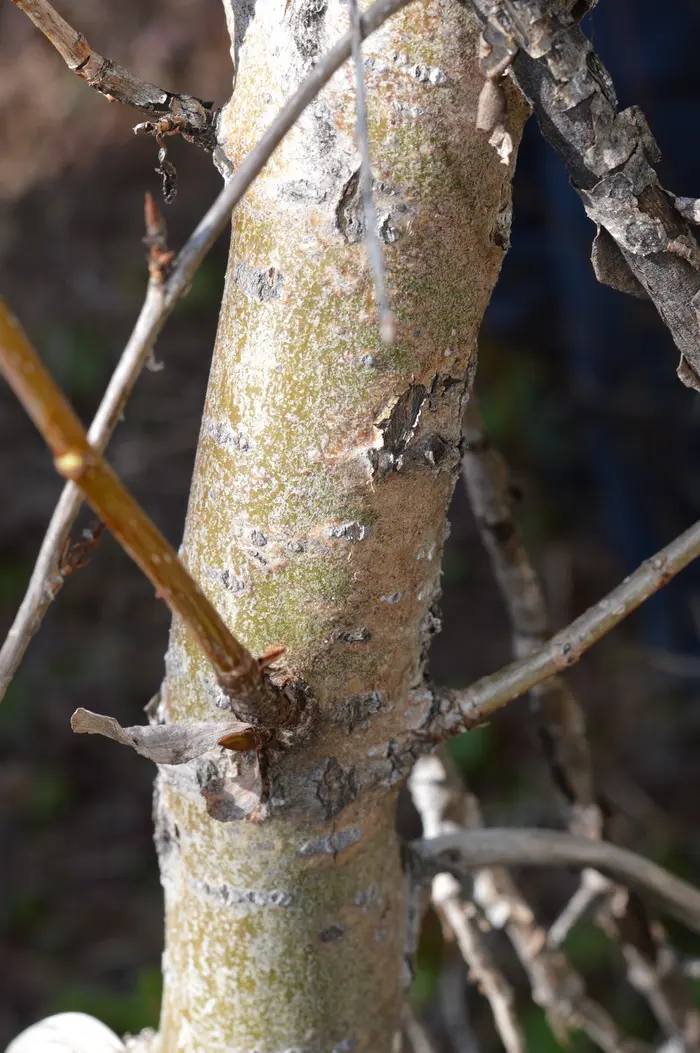
Young black cottonwood trunk
The young tree bark is grayish green with prominent lenticels, similar to birch. The young growth colors to bright reddish brown as the sap rises in spring. The mature tree can be up to 30 meters (100 feet) tall and has a distinctive silhouette in the spring landscape.
If you are looking for the tree in the summer, it will be fully leafed out. The leaves are dark green, long, and sometimes heart shaped. On the underside of the leaf, there is often a splotch of the reddish brown resin still evident.
The cottonwood trees are prone to wind damage and a windfall branch in winter or early spring can yield an abundance of resinous buds. If you find such a treasure, be sure to harvest every single bud. On the other hand, usually the tree is too tall to allow you to harvest from a mature tree, and those looking for this herbal treasure will be searching for young saplings between 2 feet and 10 feet tall. At this height the trunk is supple and the branches can be bent over to bring the buds within easy picking range.
I’m told that the First Nations people in British Columbia tap the mature cottonwood trees to gather the resinous healing sap, but I haven’t personal experience with this way to harvest Balm of Gilead. I’d love to learn more about this practice.
Foragers Code of Ethics
- Only harvest on land that you own or land where you have permission to harvest.
- Make positive identification of the tree.
- Don’t take more than 1/3rd of the buds from a living tree
- Don’t take the terminal tip on any branch from a living tree
- If you can harvest from a wind-fallen branch this is idea
- Respect the growth needs of the tree.
- Use all that you take.
Conscientiously harvesting the buds
The cottonwood buds contain the sticky resin that is responsible for the healing properties of Balm of Gilead. The resin is the sap from tree. If you wait another week or two, these buds will swell with the resin and then the leaves will unfold. Once the leaves break the window for the harvest season is over.
Since the buds represent the leaves of the tree, you want to leave enough buds on the plant to nourish the root for another season and produce the next spring’s leaf buds. The leaf buds grow during the summer months and then lie dormant on the tree from leaf drop until they swell with the rising sap, the following spring. A general rule for harvesting balm buds, is to never take the terminal bud, as this bud represents the growing branches, as well as the future leaves. Of the buds that alternate along the branch, take only 1/3rd. Don’t harvest from a tree that has already been harvested from – including those buds eaten by deer. Over harvest will kill the young trees.
How to make balm of Gilead Oil
Gather the buds of balsam poplar or black cottonwood trees in early spring before bud break.
Let the buds wilt for several hours. Do not wash them.
Put the buds in a wide mouth mason jar. Cover with virgin olive oil or another stable carrier oil like sweet almond oil.
Cap tightly. Label the jar with the herb name and date.
Shake the jar daily or as often as you think of it. This helps prevent mold by keeping the buds immersed in the oil.
After 6 weeks (longer is fine) strain the buds from the oil, pressing to retain as much of the oil as possible. Discard spent buds.
Use this oil as a massage oil or make a salve with it.
To make balm of Gilead salve
The slow way
If you plan to add essential oils to this salve, choose essential oils according to the final use of the salve. For instance, if you are using this for first aid purposes you may want to add lavender or tea tree for additional antimicrobial and anti fungal qualities. If you are using it to help with congestion, adding eucalyptus or Balm Mint Bush (kidsafe) can help.
Makes 3 ounces
- 1/4 cup Balm of Gilead infused oil
- 2 teaspoon beeswax (8 grams)
- 28 drops essential oil (2%) (optional)
Directions:
- Make a double boiler using a glass measuring cup placed in a saucepan. Fill the pan with water till it reaches half way up the sides of the measuring cup.
- Add the infused oil and the beeswax to the glass measuring cup. Melt the beeswax over medium heat. Stir to combine the beeswax and oil. Remove from heat.
- Add essential oils if desired. Stir to combine.
- Pour into salve tins.
- Label and date. Salve should last 2 years if the oils that you used are stable.
Use for arthritis, bursitis, joint pain, muscle ache, wound care, and chest congestion.
Action Step:
Find black cottonwood or balsam poplar trees in your region. If you are within the harvest window, find a downed branch and harvest 2 or 3 cups of resinous buds for balm of Gilead infused oil. Make the infused oil. In the comments tell us about your experience.
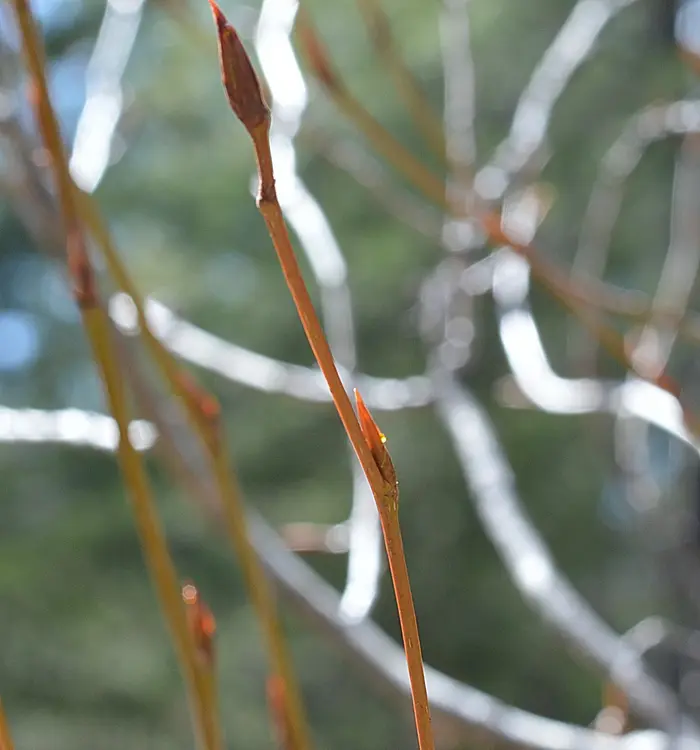
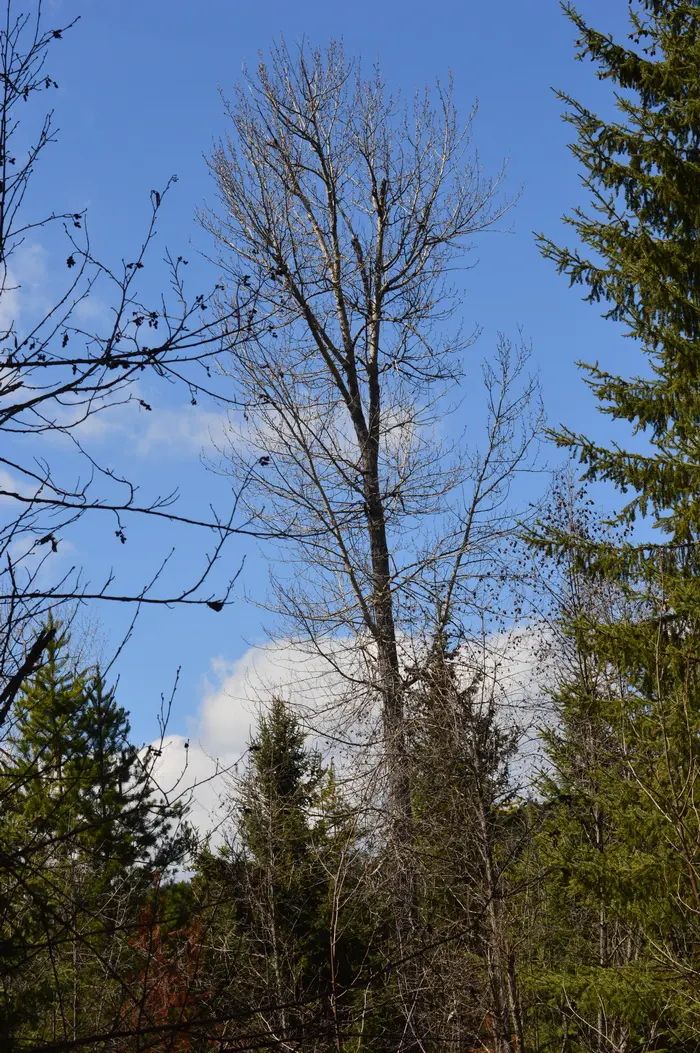
Though, the new buds won’t appear until next spring..
I have some poplar trees growing in my backyard, they grow all over.. not sure if they are the “black” poplar.